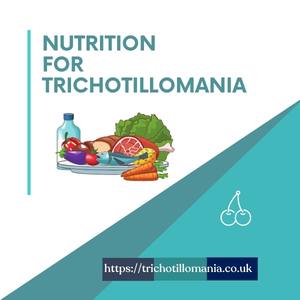Clinical research into BFRBs
A February 2023 study of a dementia medication for trichotillomania and dermatillomania, Grant et al, (2023) found that most people with these disorders were referred to psychiatrists rather than dermatologists. This appears to make good clinical sense because the study also found that compared with a placebo, the medication (Memantine) shows a significant reduction in skin picking and hair pulling.
BFRBs are categorised under Obsessive Compulsive Related Disorders in the DSM-5 (The Diagnostic and Statistical Manual of Mental Disorders, Fifth Edition). Most BFRBs are sedentary activities, experienced particularly during periods of boredom. Researchers from Stanford University School of Medicine have developed the study of specific nutritional supplements to prevent skin picking and hair pulling. Laboratory mice have been supplemented with NAC (N-acetylcysteine) and glutathione, leading to decreased BFRBs.
NAC is necessary for the natural formation of glutathione. Glutathione is one of the methods used by the brain to regulate cortisol. Cortisol is often described as “the stress hormone”, but its role in life is far more complex and robust. Cortisol wakes people up in the morning and lowers to allow sleep at night. Many people with BFRBs experience a reversed effect, feeling extremely low in energy on waking and only beginning to wake up by the time most people go to bed. Another effect of cortisol is to lower histamine levels, thereby reducing inflammation both in the body and brain.
Many humans find NAC helpful to reduce their BFRBs, but ideally a full nutritional program should be tailored to the individual by qualified personnel.
The role of enhanced emotion in trichotillomania is evident in certain brain areas, and the reward centre of the brain reveals a connection with dopamine. An MRI-based human study by Grachev investigated only twenty right-handed females aged 28-30, ten were tricsters while ten were not. Two areas of the neocortex were significantly reduced in volume, but there was no overall loss of volume, indicating that the tricsters’ brains may have developed differently, possibly in a compensatory manner. Additional studies have also revealed increased grey matter in the amygdale hippocampus area of the brain, which plays a vast role in emotional processing (Aldridge et al, 1993).
Increased cortical thickness has also recently been revealed in people with BFRBs and their close relatives, possibly causing response inhibition. (Odlaug et al, 2014)
References
Aldridge JW,. Berridge KC, Herman M, Zimmer L, Research report neuronal coding, Psychological Sciences, 4 (1993).
Christenson GA, Popkin MK, Mackenzie TB & Realmuto GM, Lithium treatment of chronic hairpulling, Journal of Clinical Psychiatry, 52 (1991).
Grachev ID, MRI-based morphometric topographic parcellation of human neocortex in trichotillomania, Psychiatry and Clinical Neuroscience, 51(1997).
Grant JE, Chesivoir E, Valle S, Ehsan D, Chamberlain SR, Chir MMB, Double-Blind Placebo-Controlled Study of Memantine in Trichotillomania and Skin-Picking Disorder, Accessed: 22 Feb 2023 https://doi.org/10.1176/appi.ajp.20220737
Odlaug BL, Chamberlain SR, Derbyshire KL, Leppink EW, Grant JE, Impaired response inhibition and excess cortical thickness as candidate endophenotypes for trichotillomania, Journal of Psychiatric Research, 59 (2014).
If you are interested in carrying out a research project and would like any help or involvement from us, please contact us. We are always happy to help improve knowledge of trichotillomania in any way we can.




